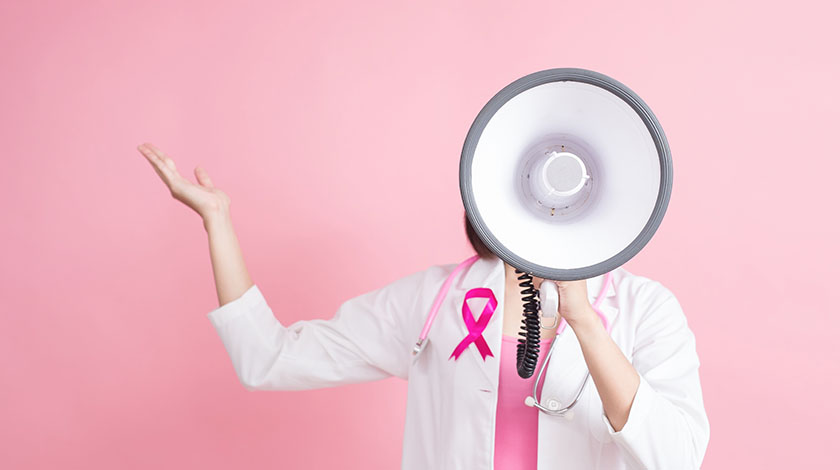Did you know October is Breast Cancer Awareness Month? Breast Cancer has become the third leading cause of cancer-related deaths among women in Hong Kong. Currently, one in 15 Hong Kong women is at risk of developing breast cancer1, according to the Hong Kong Cancer Fund (HKCF).
Breast Cancer Awareness Month is a valuable opportunity to reach out to the women in your life — and, for our female readers, remind yourselves — of the risks, signs and symptoms associated with breast cancer. Don’t be shy. You could save a life!
Risk factors and prevention

- Age
In general, older women are more likely to develop breast cancer. According to the Hospital Authority’s Hong Kong Cancer Registry in 2018, 56 is the median age of women with breast cancer in Hong Kong. - Obesity
Women who are overweight or obese are more at risk, particularly after menopause.2 Regular exercise and a healthy diet rich in fiber and low-GI carbs can help to keep weight and body fat levels manageable in order to reduce cancer risk. - Alcohol consumption
Heavy drinking isn’t just bad for your liver or your heart, it can put you at increased risk of cancer. Try to restrict alcohol consumption to no more than 5 glasses per week, and make sure you spread it out. Drinking 5 units in a single drinking session can still be very harmful to your body. - Hormones
Estrogens are natural hormones. Higher amounts of estrogen in the blood are linked to an increased risk of breast cancer in women. Exposing longer to fluctuating levels of estrogen, women who start their menstrual cycle early in life, or experience menopause later in life are at higher risk.1
Birth control pills control fertility with doses of estrogen and progesterone, they increase the risk for breast and cervical cancer slightly. Those who have a family history of breast cancer or those with a BRCA mutation should talk to their doctor about the risks of the pill.3
The HKCF reported that in 2016, that there were 4108 new breast cancer cases among women in Hong Kong.1Why take the chance? Early detection and risk management can do wonders for survival rates and treatment success. Take the opportunity to spread the word.

